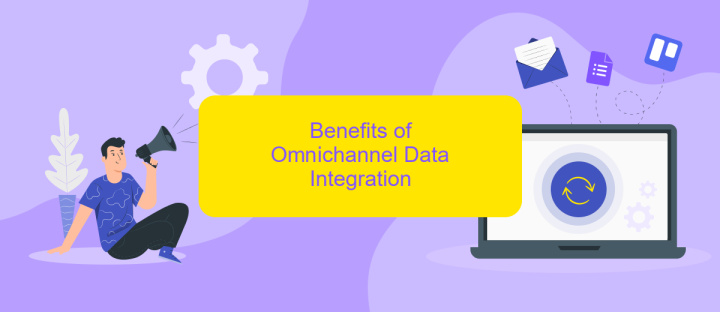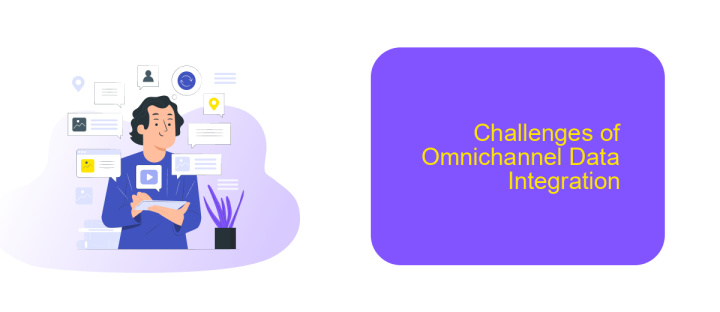Omnichannel Data Integration
In today's digital landscape, businesses must seamlessly integrate data across multiple channels to deliver a cohesive customer experience. Omnichannel data integration enables companies to unify information from various touchpoints, providing a comprehensive view of customer interactions. This holistic approach not only enhances customer satisfaction but also drives informed decision-making and operational efficiency, positioning businesses for sustained success in a competitive market.
Omnichannel Data Integration
Omnichannel data integration is crucial for businesses aiming to provide a seamless customer experience across various platforms. This approach ensures that data from multiple channels—such as social media, email, and in-store interactions—are consolidated into a single, cohesive system. By integrating data from diverse sources, companies can gain a comprehensive view of customer behavior, preferences, and needs.
- Improved customer insights
- Enhanced data accuracy
- Streamlined operations
- Personalized customer experiences
One effective tool for achieving omnichannel data integration is ApiX-Drive. This service allows businesses to easily connect and synchronize data from various platforms without the need for complex coding. By leveraging ApiX-Drive, companies can automate data flows, reduce manual efforts, and ensure that their customer data is always up-to-date and accurate. This not only enhances operational efficiency but also empowers businesses to make data-driven decisions with confidence.
Introduction to Omnichannel Data Integration

Omnichannel data integration is a strategic approach that aims to unify data from various channels into a single, cohesive system. This integration allows businesses to provide a seamless customer experience by consolidating information from multiple touchpoints such as websites, social media, email, and physical stores. By breaking down data silos, companies can gain a comprehensive view of customer interactions, leading to more informed decision-making and personalized marketing strategies.
Setting up omnichannel data integration can be complex, but services like ApiX-Drive simplify the process. ApiX-Drive offers a robust platform for automating data flows between different systems, ensuring that information is consistently updated and accessible. With its user-friendly interface and extensive integration capabilities, businesses can effortlessly connect various data sources, enhancing operational efficiency and customer satisfaction. Utilizing such tools not only streamlines data management but also empowers organizations to stay agile in a competitive market.
Benefits of Omnichannel Data Integration

Omnichannel data integration offers numerous advantages for businesses looking to streamline their operations and enhance customer experiences. By consolidating data from various channels, companies can gain a comprehensive view of their customers, leading to more informed decision-making and personalized interactions.
- Improved Customer Insights: Integrating data from multiple sources allows businesses to create a unified customer profile, leading to better understanding of customer behavior and preferences.
- Enhanced Operational Efficiency: By automating data integration processes, companies can reduce manual effort and minimize errors, resulting in smoother workflows and increased productivity.
- Personalized Marketing: With a holistic view of customer data, businesses can tailor their marketing campaigns to individual needs, boosting engagement and conversion rates.
- Real-Time Data Access: Omnichannel integration enables real-time data synchronization, ensuring that all departments have up-to-date information for timely decision-making.
- Cost Savings: Efficient data integration reduces the need for multiple data management tools and systems, leading to significant cost reductions.
Services like ApiX-Drive facilitate seamless omnichannel data integration by providing automated solutions that connect various platforms and applications. This not only simplifies the integration process but also ensures data accuracy and consistency across all channels. Leveraging such tools can significantly enhance a company's ability to deliver a cohesive and personalized customer experience.
Challenges of Omnichannel Data Integration

Omnichannel data integration presents a myriad of challenges that can complicate seamless data flow across various platforms. One of the primary issues is the inconsistency in data formats, which can lead to errors and misinterpretations when integrating information from different sources.
Another significant challenge is ensuring data security and privacy. With multiple channels involved, the risk of data breaches increases, making it crucial to implement robust security measures to protect sensitive information.
- Data format inconsistency
- Data security and privacy
- Scalability issues
- Real-time data synchronization
- Complexity in system integration
To address these challenges, services like ApiX-Drive can be instrumental. ApiX-Drive simplifies the process of integrating various data sources by offering a user-friendly interface and automated workflows. This not only reduces the complexity involved but also ensures real-time data synchronization, enhancing the overall efficiency of omnichannel data integration.
Best Practices for Omnichannel Data Integration
To achieve successful omnichannel data integration, it is essential to establish a centralized data repository where all incoming data from various channels can be stored, processed, and analyzed. This ensures that data is consistent and easily accessible across the organization. Utilizing tools like ApiX-Drive can simplify the integration process by automating data flows between different platforms, thereby reducing the risk of errors and ensuring real-time data synchronization.
Another best practice is to implement robust data governance policies to maintain data quality and security. This includes regular data audits, setting up data validation rules, and ensuring compliance with relevant regulations. Additionally, leveraging data analytics to gain insights from integrated data can help in making informed business decisions. By following these practices, organizations can create a seamless and efficient omnichannel experience for their customers.
FAQ
What is Omnichannel Data Integration?
Why is Omnichannel Data Integration important for businesses?
What are the challenges of implementing Omnichannel Data Integration?
How can businesses get started with Omnichannel Data Integration?
What are the benefits of using a platform like ApiX-Drive for Omnichannel Data Integration?
Time is the most valuable resource for business today. Almost half of it is wasted on routine tasks. Your employees are constantly forced to perform monotonous tasks that are difficult to classify as important and specialized. You can leave everything as it is by hiring additional employees, or you can automate most of the business processes using the ApiX-Drive online connector to get rid of unnecessary time and money expenses once and for all. The choice is yours!

